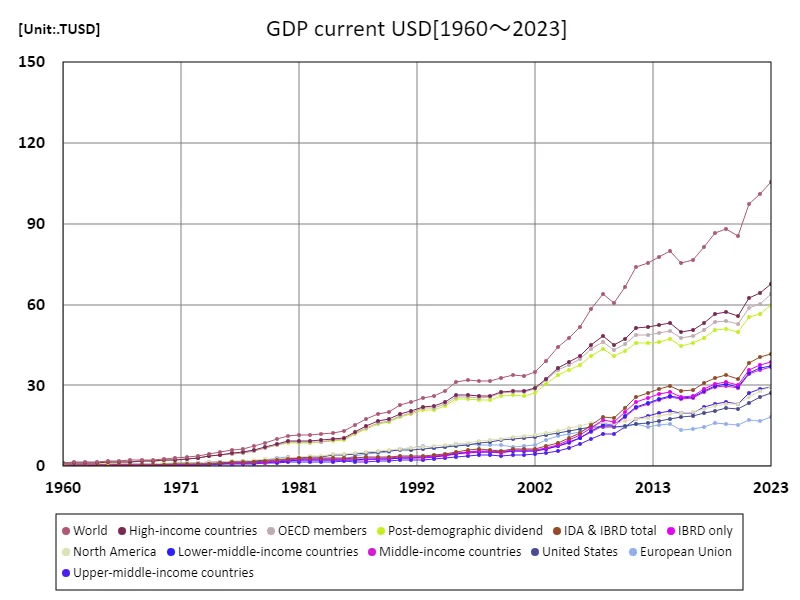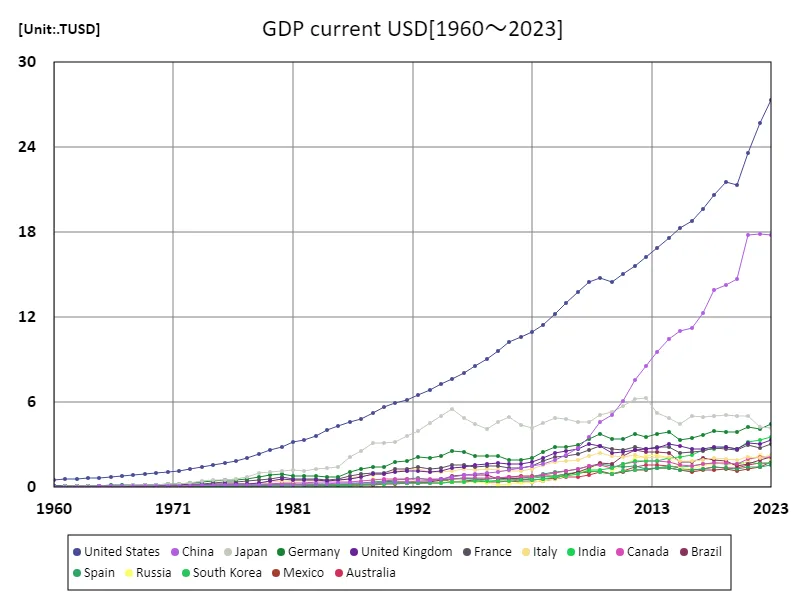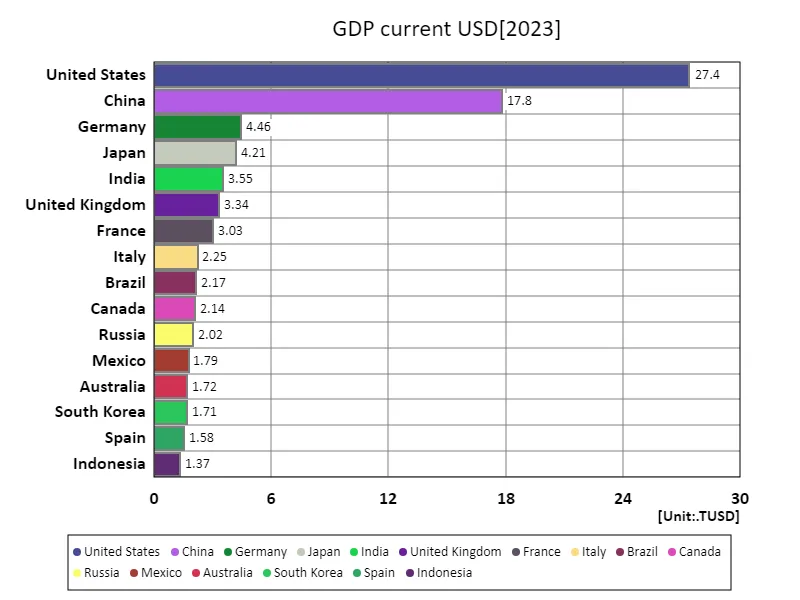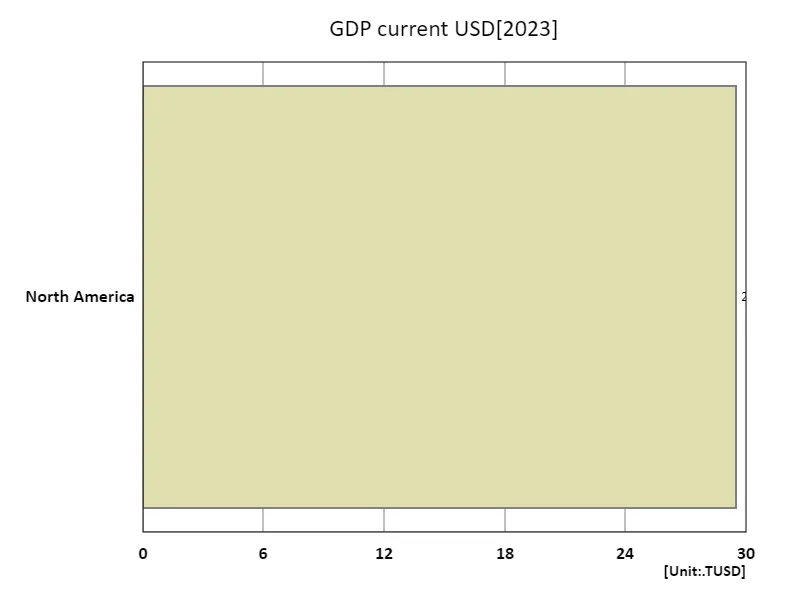Abstract
Global GDP trends have evolved significantly over the past decades, with substantial growth driven by emerging markets and technological advancements. In 2023, the world’s highest GDP reached 105 trillion USD, reflecting both inflation and real economic expansion. Historically, developed nations like the U.S. and EU dominated, but China and India have surged, especially since the early 2000s, reshaping global economic power. Despite challenges like the 2008 financial crisis and the COVID-19 pandemic, long-term growth has been fueled by globalization, digital transformation, and rising consumption in developing countries.
GDP, US dollars
Since 1960, global GDP, measured in US dollars, has experienced significant growth, reflecting both inflation and real economic expansion. The world reached a peak of 105 trillion USD in 2023, marking 100% of its potential. Early on, economic power was concentrated in developed nations, but the rise of emerging markets, particularly China and India, reshaped the global landscape. GDP at purchasing power parity (PPP) has also grown, highlighting the shift towards more equitable growth in developing economies. Technological advancements, globalization, and demographic shifts have driven long-term trends, despite occasional setbacks like recessions or global crises.


The maximum is the latest one, 105TUSD of World
GDP, US Dollars (Worldwide)
Since 1960, the U.S. economy has grown steadily, reaching a peak GDP of 27.4 trillion USD in 2023, reflecting 100% of its potential. Early post-WWII decades saw rapid industrial growth, driven by technological advances and global influence. The U.S. benefited from a dominant position in global trade, finance, and innovation. However, growth has become more gradual, impacted by financial crises, trade imbalances, and the rise of emerging markets like China. The U.S. remains a key player in the global economy, but its relative share of global GDP has decreased as other economies have expanded.


The maximum is the latest one, 27.4TUSD of United States
GDP, US Dollars (World Countries, Latest Year)
In 2023, the U.S. GDP reached a peak of 27.4 trillion USD, representing a dominant share of the global economy. The global total GDP stood at 103 trillion USD, with an average GDP per capita of 574 USD. Over time, the U.S. has maintained its economic leadership, driven by innovation, consumption, and global trade influence. However, as emerging economies like China and India grew, the U.S.’s share of global GDP has gradually decreased. Despite challenges such as financial crises and global disruptions, the U.S. continues to play a central role in shaping global economic trends.


The maximum is 27.4TUSD of United States, the average is 577GUSD, and the total is 103TUSD
GDP, US dollars (region, latest year)
In 2023, North America reached a GDP peak of 29.5 trillion USD, dominating global economic output, with a total global GDP of 113 trillion USD. The region’s GDP per capita averaged 7.52 trillion USD, reflecting its significant economic power. Historically, North America’s growth has been driven by innovation, strong financial sectors, and advanced industries. While its share of global GDP remains substantial, emerging markets, particularly in Asia, have accelerated their growth, diversifying the global economic landscape. Despite challenges, North America’s economic leadership continues to shape global trends.


The maximum is 29.5TUSD of North America, the average is 29.5TUSD, and the total is 29.5TUSD



Comments